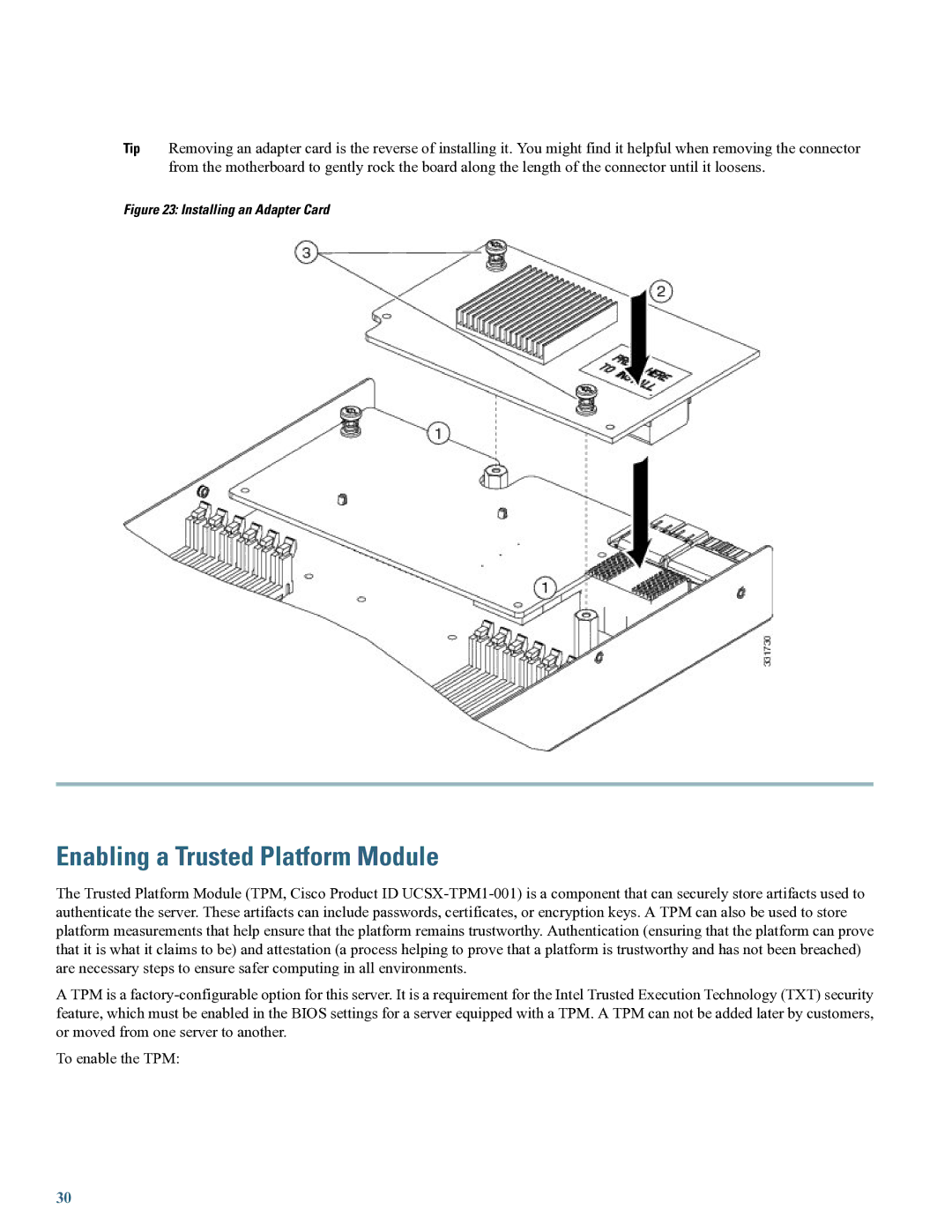UCSSPENTVB200M3 specifications
Cisco Systems has long been a stalwart in the networking and telecommunications industry, offering a comprehensive range of products designed to enhance connectivity and communication for businesses around the globe. One such standout product is the Cisco UCSSPENTVB200M3. This model is part of Cisco's Unified Computing System (UCS), specifically tailored for environments requiring reliable and efficient data center solutions.The Cisco UCSSPENTVB200M3 is characterized by its robust architecture that seamlessly integrates computing, networking, and storage resources in a single platform. This convergence is a significant advantage, as it simplifies management and reduces deployment costs. One of the primary features of this model is its scalability, allowing organizations to easily adjust their resources as their needs evolve. Whether a company is expanding, scaling down, or optimizing its operations, the UCS system provides the flexibility needed to maintain operational efficiency.
In terms of technology, the UCSSPENTVB200M3 employs Intel's Xeon processors, which are known for their powerful performance and energy efficiency. This choice of hardware ensures that the system can handle intense workloads and provides the computational power necessary for data-intensive applications. Additionally, the system supports advanced virtualization technologies that enhance its capabilities, enabling multiple operating systems and applications to run on a single physical server, which maximizes resource utilization.
Another noteworthy characteristic of the UCSSPENTVB200M3 is its advanced security features. As data breaches become increasingly common, Cisco has prioritized the protection of information within its products. This model includes integrated security features that safeguard sensitive data and ensure compliance with industry regulations.
Connectivity is also a critical component of this system, featuring multiple network interfaces that support high-speed communication. This is essential for businesses that rely on real-time data transfer and cloud-based services. Furthermore, the UCS Manager interface simplifies the management of server resources, allowing administrators to automate tasks and maintain optimal performance with ease.
Overall, the Cisco UCSSPENTVB200M3 is an exceptional solution for modern data centers, offering a combination of performance, scalability, security, and ease of management. This product stands as a testament to Cisco's commitment to innovation and its ability to meet the demands of today's dynamic business landscape. With organizations increasingly relying on technology for growth, systems like the UCSSPENTVB200M3 are vital for driving efficiency and competitiveness in the digital age.

